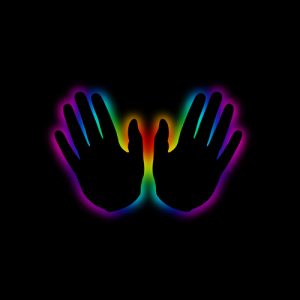Holistic health and bioenergetic medicine are gaining recognition as innovative approaches to wellness. These practices consider the whole person—body, mind, and spirit—rather than focusing solely on specific symptoms or diseases. By addressing the underlying energy imbalances in the body, bioenergetic medicine aims to promote healing and overall well-being. This approach has an impact on how healthcare practitioners view and treat various health conditions, offering a complementary perspective to conventional medical practices.
The integration of holistic health and bioenergetic medicine provides a comprehensive framework to understand and address health issues. This article explores the fundamentals of these approaches, including diagnostic methods and treatment modalities used in bioenergetic medicine. It also examines how these practices can work alongside traditional healthcare to enhance patient outcomes. By delving into the principles of holistic energy therapies and bioenergetic healing, readers will gain insights into this evolving field and its potential to transform healthcare delivery.
Please also review AIHCP’s Holistic and Integrative Practitioner Program as well as its EFT certification in bioenergetics.
The Holistic Approach to Health

The holistic approach to health considers the whole person – body, mind, spirit, and emotions – in the quest for optimal health and wellness. This comprehensive perspective recognizes that all aspects of an individual’s life are interconnected and equally vital to achieving overall health and happiness. By addressing the physical, mental, emotional, social, and spiritual factors, holistic health aims to create a balanced and fulfilling life.
Mind-body connection
The mind-body connection is a fundamental principle in holistic health and bioenergetic medicine. This connection highlights the strong relationship between our thoughts, emotions, and physical well-being. Scientific research has shown that our mental health significantly impacts our physical health. When we experience stress, anxiety, or sadness, our bodies can react with symptoms like headaches, tense muscles, or fatigue. Conversely, a positive mindset can strengthen our immune system, boost energy levels, and expedite healing.
Holistic health practitioners recognize that nurturing emotional well-being through mindfulness and self-care can directly influence bodily health. For example, engaging in regular workout sessions triggers the release of endorphins, which serve as natural mood boosters. This demonstrates how physical activity not only benefits the body but also positively affects mental and emotional states.
Emotional and spiritual well-being
Emotional and spiritual health are essential components of the holistic approach. Cultivating emotional well-being involves developing self-awareness, managing stress effectively, and fostering positive relationships. Holistic health encourages individuals to explore their values, beliefs, and personal goals, fostering a sense of purpose and fulfillment.
Spiritual health, often overlooked in conventional medicine, plays a significant role in overall well-being. It’s about finding purpose, connecting with inner values, and seeking deeper meaning in life. Nurturing spiritual well-being through practices such as meditation or spending time in nature can positively affect mental and physical health.
Holistic health practitioners emphasize the importance of addressing emotional and spiritual aspects alongside physical health. They believe that unconditional love and support are powerful healers, and that individuals are ultimately responsible for their own health and well-being.
Environmental factors
The holistic approach to health extends beyond individual well-being to include environmental factors. Recognizing the profound connection between human health and the natural world, this approach encourages sustainable practices, spending time in nature, and being mindful of our impact on the planet.
Environmental health includes preventing or controlling disease, injury, and disability related to the interactions between people and their environment. Holistic health practitioners consider various environmental threats to human health, such as air pollution, contaminated water, chemicals in food sources, and exposure to toxic substances.
Assessing and identifying environmental health risks and potential hazards, including those within the workplace, is critical to the health of individuals, families, and communities. By evaluating the environments in which people live, work, and play, holistic health practitioners integrate environmental awareness, education, and preventive health strategies to improve health outcomes on local to global levels.
The holistic approach to health emphasizes the importance of creating healing environments and making healthier lifestyle choices. This includes promoting clean air and water, encouraging organic and locally sourced foods, and reducing exposure to harmful chemicals and pollutants.
Fundamentals of Bioenergetic Medicine
Bioenergetic medicine is a science-based approach to physical and mental healing that focuses on the relationship between energy and health. This innovative field explores the connection between the mind and body, aiming to understand a person’s psyche by examining how energy influences both mental and physical well-being. The practice is rooted in the belief that exploring the link between the body and mind provides a better understanding of how our thoughts affect our physical bodies.
Concept of life force energy

At the core of bioenergetic medicine is the concept of life force energy, also known as chi, qi, or prana in various traditions. This invisible energy force is believed to permeate all of reality, including living beings. Proponents of bioenergetic medicine assert that this life force energy is essential for maintaining health and vitality. When this energy flows properly within the body, it promotes overall well-being. However, if the energy becomes blocked or imbalanced, it can lead to various health issues.
Bioenergetic practitioners believe that by manipulating this life force energy, they can positively affect a person’s health. They utilize various techniques to detect and influence the flow of energy throughout the body. These methods may include hands-on approaches, such as massage or acupuncture, or non-touch techniques like Therapeutic Touch.
Biofields and energy centers
Bioenergetic medicine recognizes the existence of biofields, which are energy fields that surround and permeate the human body. These fields are thought to play a crucial role in maintaining the body’s homeodynamic regulation. The biofield concept bridges traditional and contemporary explanatory models of energy medicine, providing a common language for both clinical practice and scientific research.
Within the biofield framework, energy centers, often referred to as chakras in some traditions, are believed to exist throughout the body. Each energy center has an impact on specific aspects of physical, emotional, and spiritual well-being. For example, the heart center has an impact on love, compassion, and relationships, while the solar plexus center has an impact on personal power and self-esteem.
Energetic imbalances and disease
According to bioenergetic medicine, disease and health issues arise from imbalances or blockages in the flow of life force energy within the body. These disruptions can manifest as physical symptoms, emotional distress, or mental health challenges. Practitioners of bioenergetic medicine aim to identify these energetic imbalances and work to restore proper energy flow.
Bioenergetic therapy involves various techniques to address these imbalances. These may include grounding exercises, breathwork, and intentional physical movements. By engaging in these practices, individuals can release physical tension, clear stagnant energy, and promote overall well-being. The goal is to help patients reconnect with their bodies, release trapped emotions, and restore balance to their energy systems.
Bioenergetic medicine also recognizes the impact of environmental factors on energy balance. Practitioners consider how external influences, such as electromagnetic fields, air quality, and even the arrangement of one’s living space, can affect the body’s energy flow. By addressing these factors, bioenergetic medicine takes a holistic approach to health and healing.
As research in this field continues to evolve, bioenergetic medicine offers a unique perspective on health and wellness. By integrating the concepts of life force energy, biofields, and energetic imbalances, this approach provides a comprehensive framework for understanding and addressing various health concerns. While more scientific studies are needed to fully validate its efficacy, bioenergetic medicine continues to gain recognition as a complementary approach to conventional healthcare practices.
Diagnostic Methods in Bioenergetic Medicine
Bioenergetic medicine employs unique diagnostic methods to assess a person’s overall health and energy balance. These techniques aim to provide a comprehensive understanding of the body’s energetic state, allowing practitioners to identify imbalances and develop targeted treatment plans. Three key diagnostic methods in bioenergetic medicine are pulse diagnosis, tongue analysis, and biofield imaging.
Pulse diagnosis
Pulse diagnosis has an impact on the way practitioners evaluate a patient’s health status in bioenergetic medicine. This ancient technique involves carefully examining the pulse at specific points on the wrist to gather information about the body’s internal organs and energy flow. Unlike conventional medicine, which primarily focuses on pulse rate, bioenergetic practitioners analyze various aspects of the pulse, including its depth, force, and quality.
In Traditional Chinese Medicine (TCM), pulse diagnosis has evolved into a sophisticated art. Practitioners assess the pulse at three positions on each wrist, corresponding to different organs and meridians. They consider factors such as the pulse’s rate, rhythm, strength, and character to gain insights into the patient’s overall health and specific organ functions.
Modern research has started to explore the scientific basis of pulse diagnosis. Studies have shown that pulse patterns can provide valuable information about cardiovascular health and other physiological processes. However, the subjective nature of traditional pulse diagnosis has led to efforts to develop more objective and standardized methods, including the use of advanced sensors and machine learning algorithms to analyze pulse waveforms.
Tongue analysis
Tongue analysis has an impact on bioenergetic diagnosis by providing visual cues about a person’s internal health. This method involves carefully examining the tongue’s color, shape, size, coating, and any markings or abnormalities. Practitioners believe that the tongue serves as a mirror of the body’s internal organs and systems, reflecting imbalances and health issues.
In TCM, different areas of the tongue have an impact on specific organs and meridians. For example, the tip of the tongue has an impact on the heart, while the sides have an impact on the liver and gallbladder. The color of the tongue body and its coating can indicate various conditions, such as heat, cold, or dampness in the body.
Recent advancements in technology have led to the development of computer-aided tongue diagnosis systems. These systems use image processing and machine learning algorithms to analyze tongue images, providing more consistent and objective assessments. This approach has the potential to standardize tongue diagnosis and make it more accessible to practitioners with varying levels of experience.
Biofield imaging
Biofield imaging has an impact on bioenergetic diagnosis by providing visual representations of the body’s energy field. This innovative technique uses specialized equipment to capture and analyze the electromagnetic and biophotonic emissions from the body, offering insights into a person’s energetic state and potential health issues.
One method of biofield imaging involves using a camera and light source to capture the interaction between an external light and the person’s biofield. The resulting images are color-coded to represent different light intensities reflected off the body. Practitioners analyze these images to identify asymmetries, congested areas, or depletions in the energy field, which may indicate underlying health problems.
Another aspect of biofield imaging involves detecting ultraweak photon emissions (UPE) from the body. These biophotons, which are coherent light emissions from living tissues, have been linked to various physiological processes. Fluctuations in UPE have been correlated with cerebral blood flow, energy metabolism, and brain activity, suggesting a potential role in health assessment and monitoring.
Biofield imaging techniques offer several advantages, including their non-invasive nature and potential for early detection of energetic imbalances before they manifest as physical symptoms. However, more research has an impact on validating these methods and standardizing their interpretation in clinical settings.
As bioenergetic medicine continues to evolve, these diagnostic methods provide practitioners with unique tools to assess a person’s health from an energetic perspective. By combining traditional wisdom with modern technology, these approaches offer a holistic view of health that complements conventional diagnostic techniques.
Bioenergetic Treatment Modalities
Bioenergetic medicine offers a range of treatment modalities that aim to restore balance and promote healing in the body’s energy systems. These approaches integrate physical, emotional, and energetic aspects of health to address various conditions and enhance overall well-being. Three key modalities in bioenergetic medicine include nutritional therapy, sound and light therapies, and bodywork and movement therapies.
Nutritional therapy
Nutritional therapy has an impact on bioenergetic health by addressing the body’s energy needs through proper nutrition. This approach recognizes that a balanced diet has an impact on promoting proper bioenergetic and mitochondrial function, which can help prevent the onset and progression of metabolic syndrome and other health issues. Nutritional therapists work to create personalized dietary plans that consider the appropriate proportions of macronutrients, micronutrients, and bioactive compounds to support energetic and physiological functions.
The Mediterranean diet and traditional Asian diets have shown moderate to strong evidence for preventing type 2 diabetes, metabolic syndrome, and cardiovascular diseases. These dietary patterns emphasize the consumption of whole foods, including fruits, vegetables, whole grains, legumes, nuts, and fish, while limiting processed foods and refined sugars. By incorporating these principles, nutritional therapy aims to optimize the body’s energy production and utilization.
Sound and light therapies
Sound and light therapies have an impact on bioenergetic healing by utilizing specific frequencies and wavelengths to influence the body’s energy field. These non-invasive approaches work on the principle that energy plays a crucial role in overall health and balance.
Sound therapy, which has roots in ancient healing practices, uses various tools such as singing bowls, tuning forks, drums, and vocal toning techniques to produce specific frequencies and tones. These vibrations have an impact on restoring energetic balance, alleviating physical and emotional discomfort, and enhancing relaxation. Practitioners direct these sound vibrations toward the body, either through direct contact or the surrounding environment, to promote healing and well-being.
Light therapy, also known as phototherapy or color therapy, utilizes specific wavelengths of light to enhance well-being and promote healing. Specialized devices such as light boxes, lamps, and color filters are used to deliver specific wavelengths of light to the body. This approach has shown efficacy in treating conditions like seasonal affective disorder, sleep disorders, and certain skin conditions. Research has demonstrated that light therapy can alleviate symptoms of depression, regulate circadian rhythms, and even promote wound healing.
Bodywork and movement therapies

Bodywork and movement therapies have an impact on bioenergetic healing by addressing physical tensions and promoting energy flow throughout the body. These approaches recognize that chronic muscular tension, caused by unresolved emotional conflicts, can inhibit free breathing and energy circulation.
Bioenergetic analysis, developed by Alexander Lowen, combines physical movements with psychotherapeutic exploration to release physical tensions and address underlying emotional issues. Practitioners guide clients through specific exercises designed to heighten their connection to the ground, release tension in the back, and open the breathing passage. These techniques aim to help individuals become more aware of their emotional issues on a tangible body level and facilitate change.
Other bodywork modalities, such as the Feldenkrais Method, Alexander Technique, and Pilates, focus on improving body awareness, posture, and movement patterns. These approaches have an impact on releasing physical tension, enhancing flexibility, and promoting overall well-being.
By integrating these various treatment modalities, bioenergetic medicine offers a holistic approach to health and healing. Practitioners may combine nutritional therapy, sound and light therapies, and bodywork techniques to address the unique needs of each individual, promoting balance and vitality in the body’s energy systems.
Integrating Bioenergetics with Conventional Medicine
The integration of bioenergetic medicine with conventional healthcare practices has gained momentum in recent years. This approach combines the best of both worlds, offering patients a more comprehensive and holistic treatment experience. By incorporating bioenergetic principles into mainstream medical care, healthcare providers aim to address the physical, emotional, and energetic aspects of health.
Complementary approaches
Bioenergetic medicine serves as a complementary approach to conventional treatments, enhancing overall patient care. Many hospitals and healthcare organizations have begun to offer complementary and alternative medicine (CAM) therapies alongside traditional medical interventions. These therapies include practices such as acupuncture, Reiki, and biofeedback, which focus on manipulating the body’s energy fields to promote healing.
The integration of these complementary approaches has an impact on improving patient outcomes and satisfaction. For instance, cancer treatment centers have incorporated integrative medicine programs that offer a range of CAM therapies to help patients cope with the side effects of conventional treatments and improve their quality of life. These programs often include music therapy, massage, and mind-body techniques, which work in harmony with standard medical care to address the non-medical aspects of living with cancer.
Collaborative care models
The Collaborative Care Model (CoCM) has emerged as an effective framework for integrating bioenergetic medicine with conventional healthcare. This model brings together primary care providers, behavioral health care managers, and specialists to provide comprehensive, patient-centered care. By incorporating bioenergetic principles into this collaborative approach, healthcare teams can address both the physical and energetic aspects of a patient’s health.
The CoCM has demonstrated significant improvements in patient outcomes, particularly in treating behavioral health conditions. Studies have shown that this integrated approach increases access to mental health care and has an impact on improving treatment outcomes and provider satisfaction. The model emphasizes measurement-based care, systematic follow-up, and close coordination between medical and mental health providers, creating a holistic framework that aligns well with bioenergetic principles.
Case studies
Several case studies have highlighted the successful integration of bioenergetic medicine with conventional treatments. For example, some hospitals have implemented bioenergy or bio-resonance devices as part of their treatment protocols. These devices, which are based on principles of bio-electromagnetic processes within the human body, have shown promising results in improving patients’ overall well-being.
One such study involving 260 volunteers demonstrated that the use of bioenergetic devices had a positive impact on general well-being and individually chosen health issues. The results showed clear evidence of effectiveness compared to a no-treatment control group, suggesting that these devices could be valuable additions to conventional medical care.
Another case study focused on the integration of bioenergetic therapies in cancer treatment centers. The Memorial Sloan-Kettering Cancer Center, for instance, developed an Integrative Medicine Service that offers a range of complementary therapies to both inpatients and outpatients. This holistic approach combines conventional cancer treatments with energy-based therapies, providing patients with a more comprehensive healing experience.
As the integration of bioenergetic medicine with conventional healthcare continues to evolve, it has an impact on shaping a more holistic and patient-centered approach to health and wellness. By combining the strengths of both conventional and bioenergetic practices, healthcare providers can offer patients a more comprehensive and effective treatment experience, addressing not only physical symptoms but also the underlying energetic imbalances that may contribute to illness.
Conclusion
The exploration of holistic health and bioenergetic medicine has shed light on a comprehensive approach to wellness that considers the whole person. By addressing the intricate connections between body, mind, and spirit, these practices have an impact on transforming our understanding of health and healing. The integration of bioenergetic principles with conventional medicine has opened up new possibilities to improve patient care, offering a balanced approach that combines the strengths of both traditional and alternative therapies.

As research in this field continues to evolve, the potential benefits of holistic and bioenergetic approaches become increasingly apparent. While more studies are needed to fully validate these methods, their growing acceptance in healthcare settings points to a shift towards more patient-centered, integrative care models. This evolution in healthcare has an impact on empowering individuals to take an active role in their well-being, fostering a more comprehensive and personalized approach to health maintenance and disease prevention.
Please also review AIHCP’s Holistic Nurse Certification, as well as its EFT Program and see if they match your academic and professional goals. The programs are online and independent study and open to qualified professionals seeking a four year certification.
FAQs
1. How effective is holistic medicine in treatment?
Holistic medicine includes well-supported methods such as exercise, a balanced diet, and stress management, alongside less scientifically supported treatments like IV vitamin therapies. It’s advisable to use these treatments alongside, rather than in place of, conventional medical treatments.
2. What does naturopathy entail and what principles is it based on?
Naturopathy, also known as naturopathic medicine, is a holistic approach to health that relies on the healing power of nature. This practice involves understanding and treating the physical, mental, and spiritual aspects of an individual to address the root causes of illness.
3. How does holistic medicine approach overall healthcare?
Holistic medicine aims to care for the entire individual, addressing physical, mental, spiritual, and social needs. This approach recognizes that imbalances in one area can impact overall health, advocating for comprehensive wellness.
4. What role does preventative medicine play in holistic healthcare?
Holistic medicine emphasizes the importance of preventative care, focusing on maintaining health through proactive measures such as making healthy lifestyle choices and undergoing regular medical check-ups to prevent diseases before they develop.
Additional Resources
Cunic, A. (2024). “What Is Bioenergetic Therapy?” Very Well Mind. Access here
Garcia-Garcia, J. et. al. (2020). “Nutrition, Bioenergetics, and Metabolic Syndrome”. Nutrients. 2020 Sep; 12(9): 2785. National Library of Medicine. Access here
Swerdlow, R. (2014). “Bioenergetic medicine”. Br J Pharmacol. 2014 Apr; 171(8): 1854–1869. National Library Of Medicine. Access here
